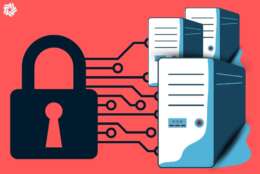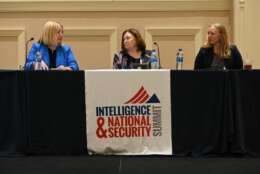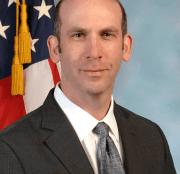Cybersecurity
-
The federal chief information security officer says the zero trust strategy is helping cyber leaders make the case for specific investments in the 2024 budget.
October 19, 2022 -
The National Cybersecurity Center of Excellence, part of the National Institute of Standards and Technology is planning a healthcare project to establish best practices for security and privacy in telehealth situations.
October 17, 2022 -
Gharun Lacy, the deputy assistant secretary and assistant director for cyber and technology security at the Foreign Affairs Cybersecurity Center at the State Department, said reducing the time between alert and response is their main focus.
October 17, 2022 -
The Army has a new cybersecurity strategy for operational technology, as service officials are concerned about cyber attacks on critical infrastructure.
October 14, 2022 -
The White House and agencies are moving out with new cyber requirements for water, healthcare, and emergency communications.
October 14, 2022 -
As federal agencies and contractors come to grips with the burden of protecting their software supply chain, understanding who had a hand in the development of their software products has taken on increasing importance. It comes down to pedigree. Where did your software come from? Was it domestic or international? Who had a hand in developing it?
October 13, 2022 -
In this exclusive webinar edition of Ask the CIO, Dan Elmore, the executive director of the Idaho National Lab Wireless Security Institute in the Energy Department, said agencies need to better understand the potential impact of 5G on their mission areas.
October 10, 2022 -
In a cybersecurity context, “island-hopping” describes an advanced – and increasingly common – form of cyberattack.
October 10, 2022 -
The DoD’s CIO and its Office of Undersecretary of Defense for Acquisition and Sustainment will remove weapons systems from the network if they are not cyber secure.
October 10, 2022 -
Jamie Holcombe, the chief information officer for USPTO, said a new contract award will help the agency move toward a Secure Access Service Edge (SASE) architecture.
October 07, 2022 -
The growing cybersecurity workforce gap is cause for serious concern, particularly when it comes to protecting government assets.
October 07, 2022 -
The biggest-yet phase of the bring-your-own-device pilot will help the Army figure out how to scale the technology across a diverse population of users in the active and reserve components — and part of the Air Force too.
October 07, 2022 -
With three new awards to OPM, HUD and the Army, the TMF Board now has "loaned" out $435M out of the $1B it received in the 2021 American Rescue Plan Act.
October 06, 2022 -
Industry groups seem to support the Biden administration Sept. 14 memo on secure software development and acquisition
October 05, 2022 -
CISA is kicking off Cybersecurity Awareness Month with a new binding operational directive for agencies.
October 04, 2022














